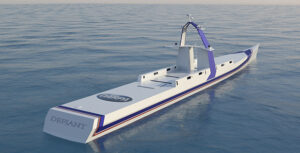
The Defense Advanced Research Projects Agency (DARPA) said it selected Serco Inc. to move forward with the No Manning Required Ship (NOMARS) X-ship medium unmanned surface vessel (MUSV) program. NOMARS is a two-phase DARPA program that seeks to demonstrate the reliability and feasibility of a USV operating long missions at sea autonomously with entirely no manning. DARPA underscored this program takes a “clean-sheet approach to ship design, holding firmly to the requirement that there will never be a human on…

 By
By 











